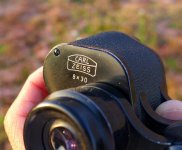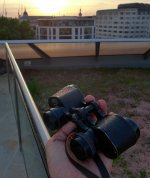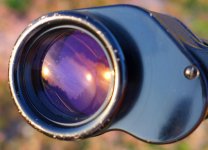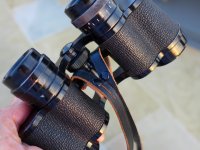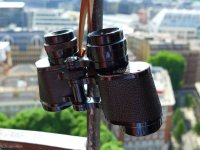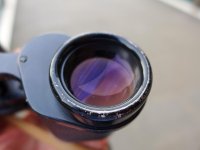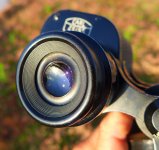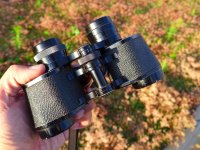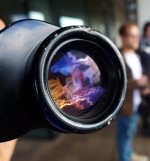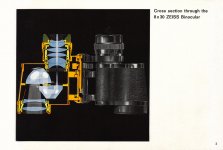Zeiss-ness [tz-ice'nsz]: the ineffable quality or property possessed by iconic products of the Zeiss optical company.
I am indebted to James Holdsworth for coining this term (I have taken the liberty of suggesting a definition) in relation to his 8x30B Oberkochen. I've now had the pleasure of spending over 60 hours [edit: I've added just under 22hr since beginning this highly subjective write-up] in the field, or more accurately on concrete as my birding revolves around watching city-living peregrines, with an older 8x30. I hope my thoughts might be of interest to members/readers of this fine forum.
This was purely a nostalgia purchase, as my birding requirements were pretty well met by more modern roof prism binoculars (SLC 8x30W mark II and Dialyt 10x40BGAT*P*). Having started off with porros, however, and especially after having being introduced to the joys of Birdforum, I really wanted to see what an 8x30 Zeiss West porro would be like to use. Recently such an opportunity presented itself, with the result that I now own an 8x30 (non-B) Oberkochen, serial number 533xxx.
An initial once-over found the image quality was very significantly degraded by significant hazing, so off it went to East Coast Binocular Repairs whom I had used for similar work previously. Gary at East Coast Binocular Repairs confirmed that it was manufactured in 1962, relatively early in the production run of this version of the Oberkochen porro. I received them back on June 13th and began using them the same day.
In the hand the binoculars are very compactly packaged and light (variously given as 480gr and 19.5 ounces/546 grams – mine weighs in at 507g on my electronic kitchen scale). Focus speed is fast, with less than one full rotation needed to take the focus wheel from lock to lock. Coatings are blue-purple. The leather strap attaches to the hinge arms (of which more later).
My expectations were that this would be a very well made device (descriptives I had read include “jewel-like” …) with a large sweet spot and excellent sharpness, but with a darker and yellower image than modern products.
I am indebted to James Holdsworth for coining this term (I have taken the liberty of suggesting a definition) in relation to his 8x30B Oberkochen. I've now had the pleasure of spending over 60 hours [edit: I've added just under 22hr since beginning this highly subjective write-up] in the field, or more accurately on concrete as my birding revolves around watching city-living peregrines, with an older 8x30. I hope my thoughts might be of interest to members/readers of this fine forum.
This was purely a nostalgia purchase, as my birding requirements were pretty well met by more modern roof prism binoculars (SLC 8x30W mark II and Dialyt 10x40BGAT*P*). Having started off with porros, however, and especially after having being introduced to the joys of Birdforum, I really wanted to see what an 8x30 Zeiss West porro would be like to use. Recently such an opportunity presented itself, with the result that I now own an 8x30 (non-B) Oberkochen, serial number 533xxx.
An initial once-over found the image quality was very significantly degraded by significant hazing, so off it went to East Coast Binocular Repairs whom I had used for similar work previously. Gary at East Coast Binocular Repairs confirmed that it was manufactured in 1962, relatively early in the production run of this version of the Oberkochen porro. I received them back on June 13th and began using them the same day.
In the hand the binoculars are very compactly packaged and light (variously given as 480gr and 19.5 ounces/546 grams – mine weighs in at 507g on my electronic kitchen scale). Focus speed is fast, with less than one full rotation needed to take the focus wheel from lock to lock. Coatings are blue-purple. The leather strap attaches to the hinge arms (of which more later).
My expectations were that this would be a very well made device (descriptives I had read include “jewel-like” …) with a large sweet spot and excellent sharpness, but with a darker and yellower image than modern products.
Attachments
Last edited:





